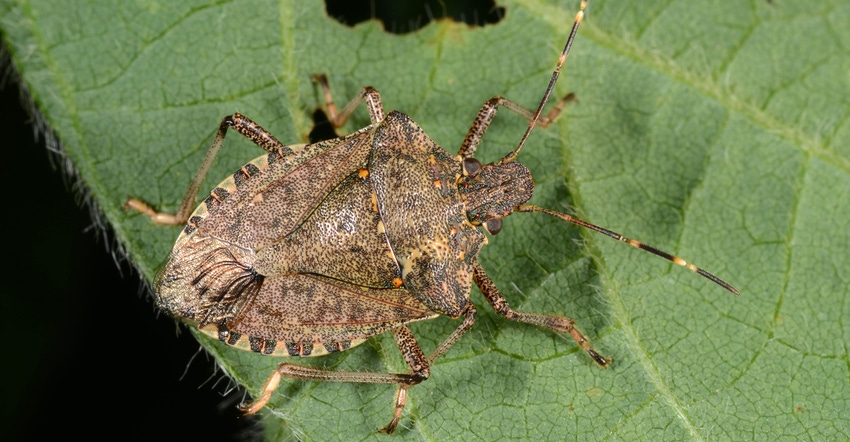May 28, 2021

Will an insecticide added when I spray fungicides help control stinkbugs? How do I know if stinkbugs will be a problem this year?
The Indiana certified crop adviser panel answering this question includes Betsy Bower, Ceres Solutions, Lafayette; Jamie Bultemeier, agronomist, A&L Great Lakes Lab, Fort Wayne; and Andy Like, farmer and CCA, Vincennes.
Bower: Stinkbugs were more of a problem the last few years in soybeans. They can affect soybeans as early as mid-July through grain fill. You can often find adults and nymphs in the same field using their piercing sucking mouth parts to puncture pods. They leave developing beans open to infection by bacteria, fungi and yeasts that can further degrade soybean seed quality.
The best way to determine if you have a stinkbug problem is to take regular sweep net counts. Take 20 swings with a sweep net in at least five different areas. If you have at least 40 stinkbugs in 100 sweeps, treat with an insecticide.
An insecticide applied with a fungicide can control any stinkbugs and nymphs that are currently feeding. Again, timing of the insecticide is everything. If you are applying the insecticide at R2 or R3, you likely will not have long enough activity for season-long control. Even an early R4 timing may not take you home, regarding protecting soybean pods. Keep checking soybeans for stinkbugs through the end of R5.
Bultemeier: Combining an insecticide with fungicide makes sense. Insect bites can provide the entrance that disease-causing pathogens need. An effective strategy for disease prevention is to prevent the infection from starting. Scouting soybean fields prior to fungicide application for insects such as stinkbugs is key. Even though stinkbugs can feed on soybean pods, scouting for them needs to start at R2 using a sweep net. Often, stinkbug populations are elevated near field boundaries. Presence of piercing/sucking or chewing insects increases the likelihood that an insecticide added to the fungicide will be effective in reducing yield loss from insect damage, as well as yield loss from disease facilitated by the insect.
Economic thresholds may be impacted by various factors around a late-season insecticide and fungicide application. The traditional stinkbug threshold in soybeans is four insects from 10 sweeps. The cost of application is already covered by the fungicide, and the cost of insecticides have greatly declined in recent years. Less than a bushel increase in yield will cover the cost of insecticide. Green stinkbugs are more easily controlled with insecticides than brown stinkbugs. Be sure to take all opportunities to increase coverage. Brown stinkbugs require insecticide contact for control. Continue to scout after an R3 application.
Like: Scouting your beans prior to applying fungicide will let you know if an insecticide is needed. If you determine an application is needed, it’s important to choose the right product. Stinkbugs, because they are hard-bodied insects, can be difficult to control with standard pyrethroid insecticides in the heat of summer when insecticides have a reduced residual. Choosing an insecticide premix of pyrethroid and neonicotinoid will give better results. The neonicotinoid provides systemic activity within the plant and is effective on piercing/sucking insects such as stinkbugs. A couple of examples of these products are Endigo ZC and Leverage 360.
You May Also Like




